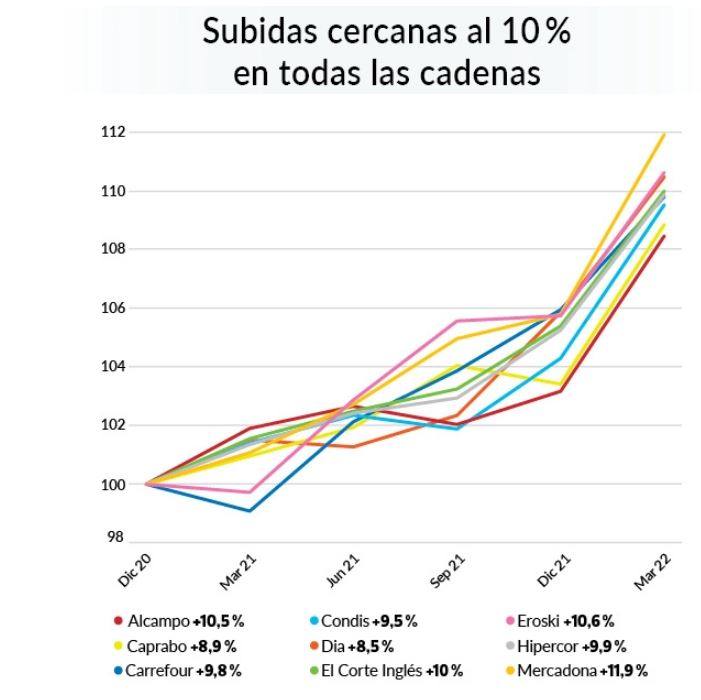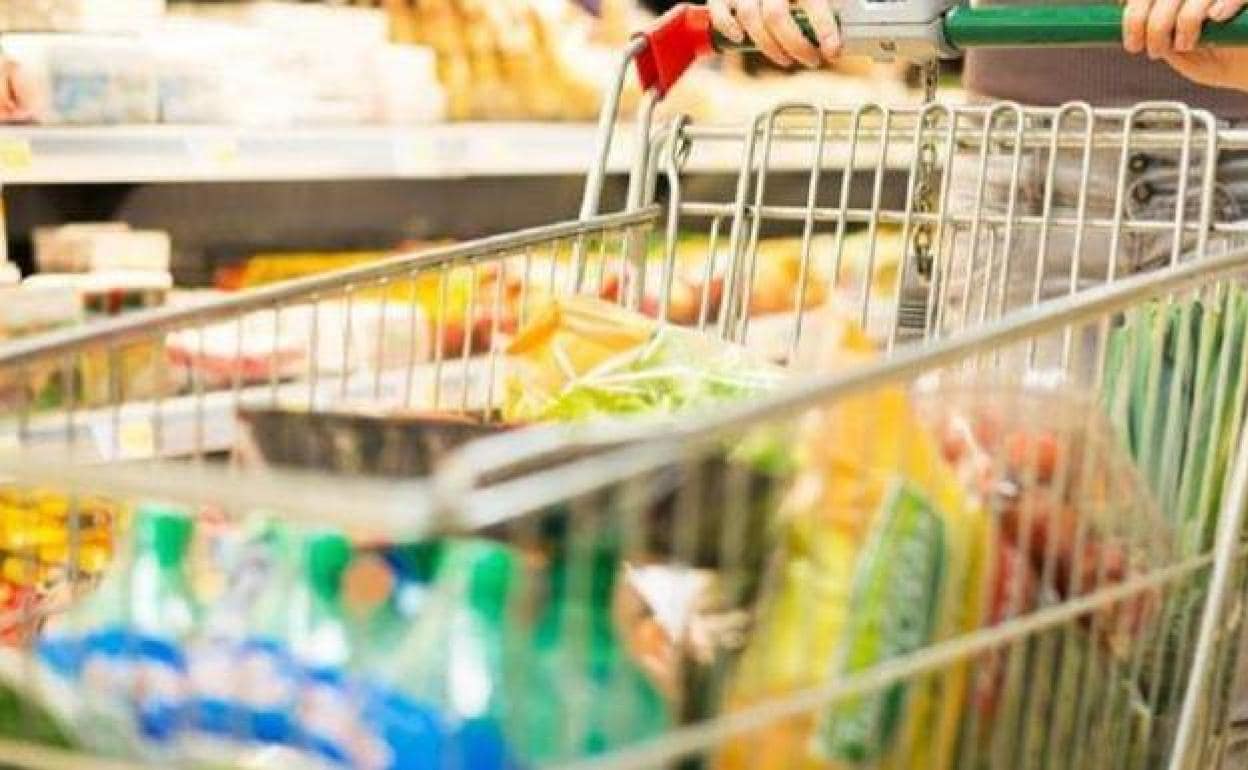Which supermarkets in Spain have increased their prices the most?
Prices have risen by 9.4 per cent in one year, although half of this increase has taken place in the last three months, according to a report by the OCU consumers association
In recent months supermarkets across Spain have been raising their prices, and in some cases also reducing the volume of some items, for example yoghurts. For this reason the Organisation of Consumers and Users (OCU) has drawn up a report on the chains that have increased their prices the most.
To do this, it has collected the prices of 156 products from the online shops of Alcampo, Caprabo, Carrefour, Condis, Dia, El Corte Inglés, Eroski, Hipercor and Mercadona over several months. The data was collected on a quarterly basis from 20 December 2020 to 8 March 2022, just before the transport strike which caused a temporary spike in prices. The study took prices from 10 different cities.
The highest price hikes
Although the rises are fairly parallel, according to the OCU, the biggest increase has been recorded in Mercadona (11.9 per cent) which together with Eroski and Alcampo, have accumulated increases of over 10 per cent. Mercadona's rise is possibly related to the fact that most of its products are own brand. The other chains moved between Dia at 8.5 per cent per cent and Hipercor at 9.9 per cent.
The rises were more moderate until December 2021, but accelerated in the first quarter of this year, due to the effects of the war in Ukraine, the rise in fuel prices and the transport strike.
In the last 12 months, from March 2021 to March 2022, Carrefour with 12.1 per cent and Mercadona with 11.4 per cent are the chains that have risen the most. Meanwhile, in El Corte Inglés and Hipercor, the increase has been lower: 7.7 per cent according to the OCU report. Nevertheless, both Mercadona and Carrefour continue to be among the cheapest national chains, together with Alcampo.
The rises affect 84 per cent of the products tracked and can be felt in food prices. Among the most affected are oils (34%), fish (16%), packaged foods (11%) and dairy products (11%). According to the OCU, if they are maintained they will mean an increase of more than 500 euros a year in the average family's shopping basket.
Why have prices risen so much?
This worrying increase in prices is due to different factors, which have coincided, according to the OCU:
• The escalation of energy prices: as the economy ground to a halt during the early stage of the pandemic and the lockdowns, the production of gas and other fossil fuels was reduced to adjust to the low demand. However, the return to activity drove up the prices of these fuels. Gas, which is used to produce electricity, rose from just over 20 euros to 130 euros per MWh in a few months and pushed up the price of electricity, due to the pricing system that OCU has repeatedly denounced.
• Rising prices of raw materials: in recent months these factors have also led to a rise in the prices of raw materials, such as fertilisers used in agriculture, or wheat and oil, which are needed to produce other foodstuffs.
• Rising costs: High energy prices have increased costs for farms, livestock and fisheries, as well as for distributors (shops, supermarkets) and manufacturers and they have even led to a transport stoppage. All these increases have had a knock-on effect on prices.
• War in Ukraine: geopolitical tensions have increased the prices of cereals and other products supplied by Ukraine and may lead to changes in the energy market at European level.


